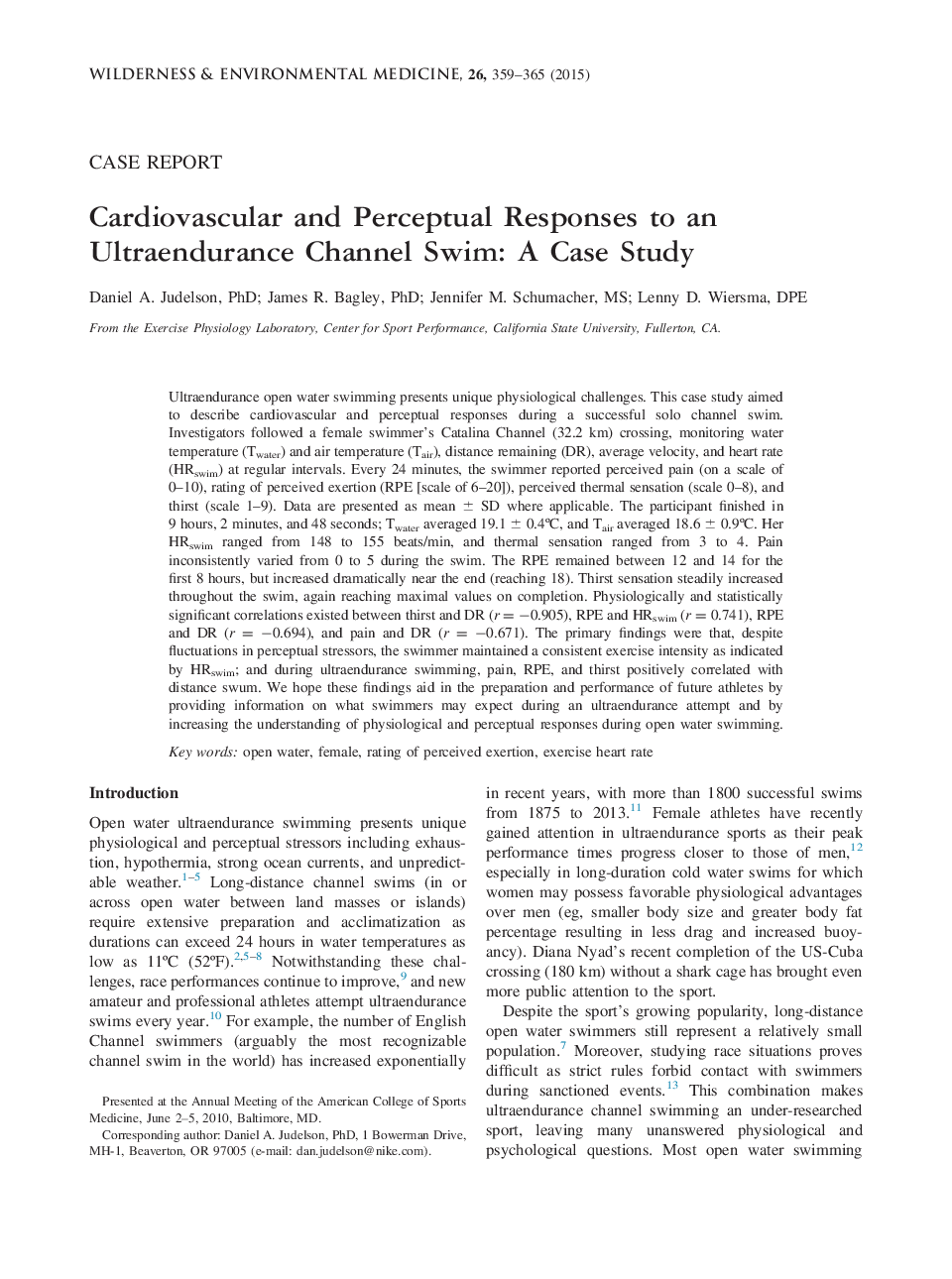| Article ID | Journal | Published Year | Pages | File Type |
|---|---|---|---|---|
| 2614691 | Wilderness & Environmental Medicine | 2015 | 7 Pages |
Ultraendurance open water swimming presents unique physiological challenges. This case study aimed to describe cardiovascular and perceptual responses during a successful solo channel swim. Investigators followed a female swimmer’s Catalina Channel (32.2 km) crossing, monitoring water temperature (Twater) and air temperature (Tair), distance remaining (DR), average velocity, and heart rate (HRswim) at regular intervals. Every 24 minutes, the swimmer reported perceived pain (on a scale of 0–10), rating of perceived exertion (RPE [scale of 6–20]), perceived thermal sensation (scale 0–8), and thirst (scale 1–9). Data are presented as mean ± SD where applicable. The participant finished in 9 hours, 2 minutes, and 48 seconds; Twater averaged 19.1 ± 0.4ºC, and Tair averaged 18.6 ± 0.9ºC. Her HRswim ranged from 148 to 155 beats/min, and thermal sensation ranged from 3 to 4. Pain inconsistently varied from 0 to 5 during the swim. The RPE remained between 12 and 14 for the first 8 hours, but increased dramatically near the end (reaching 18). Thirst sensation steadily increased throughout the swim, again reaching maximal values on completion. Physiologically and statistically significant correlations existed between thirst and DR (r = −0.905), RPE and HRswim (r = 0.741), RPE and DR (r = −0.694), and pain and DR (r = −0.671). The primary findings were that, despite fluctuations in perceptual stressors, the swimmer maintained a consistent exercise intensity as indicated by HRswim; and during ultraendurance swimming, pain, RPE, and thirst positively correlated with distance swum. We hope these findings aid in the preparation and performance of future athletes by providing information on what swimmers may expect during an ultraendurance attempt and by increasing the understanding of physiological and perceptual responses during open water swimming.
